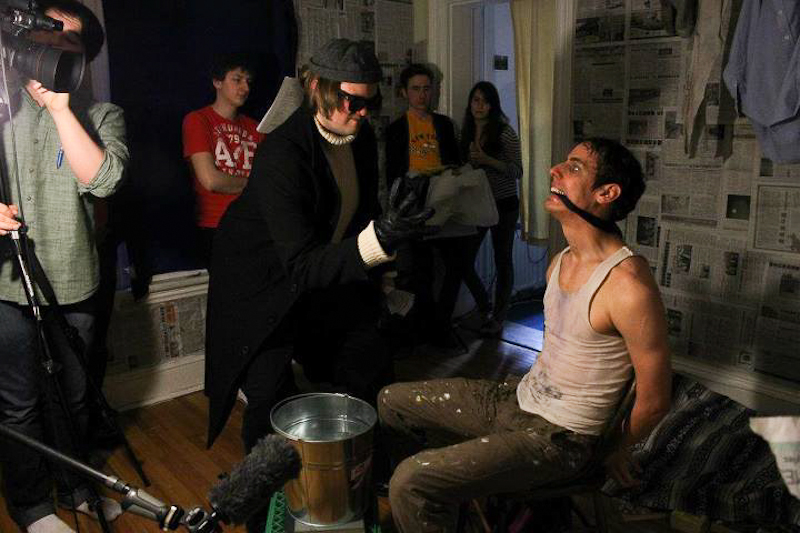Grant Jeffery spent the better part of a month decorating his living room for the set of the Great American Novel, Carleton’s film society’s annual short film.
The third-year English and theatre student said he ended up sleeping there during shooting since his room was overrun with remnants of the set.
But it’s all worth it now.
The Carleton Film Society recently finished shooting their annual short film project, which will be screened at their annual gala March 30.
Although the film is shot in black and white with no dialogue, its narrative of a debt-ridden artist is relevant to contemporary issues, Jeffery, the artistic director, said.
“It is a microcosm of a lot of what is going on in the Western world right now,” added director John Forte, a second-year public affairs and policy management student.
The film society has been meeting every Friday night to bring the story to life. Instead of shooting March 9, the group excitedly examined the raw footage as glimpses of their vision emerged.
The cool greys of every thoughtfully composed scene occasionally break into violently contrasting ‘nightmare scenes’ where the protagonist’s struggle for his art conflict with the tortuous impositions of his debtor.
Brief vignettes such as a swinging light bulb, a close-up of an etching by Gustave Doré depicting Don Quixote, and a brief glimpse of the debtor through the peephole in the door.
The film’s narrative follows a dream logic, Jeffery and Forte said. It relies on the viewer’s acceptance of logical incongruities in the plot and characterization. Indeed, the eerily, and at times comically, exaggerated characters of the sadistic debt collector and the vulnerable artist seem to have come straight out of a haunting dream.
The self-described black-and-white vaudeville aesthetic of the film is also a coy nod to many prominent figures and movements in cinema, beyond its obvious advantages as a low-budget medium. The film draws heavily from David Lynch’s Eraserhead, the manic depictions of the writing process in Barton Fink and Guy Maddin’s nod to old ages of film, Jeffery said.
“It’s a medley of a lot of stuff that many people who are in film studies just know instinctively like Murnau, Fritz Lang, a lot of these guys that we’ve seen umpteen times over the last two years of our degree,” Jeffery said.
While the film incorporates very specific film studies references, Forte said all viewers can take away from it.
“The satirical edge to it keeps the film accessible to a lot of people who might not necessarily get the subtler framework of references in which we’re operating,” he said.
The Great American Novel was a mammoth endeavour and none of this could have come together without the devotion of the film society volunteers, Forte said.
Although the result is still a series of unedited takes, he said he’s optimistic.
“It is fraught with difficulties in post-production, but we are powering through it,” he said.






